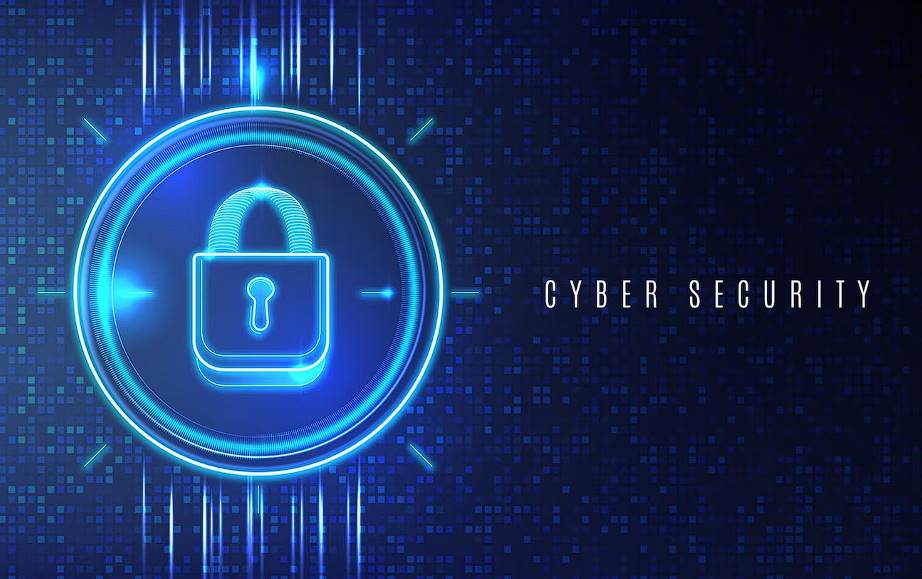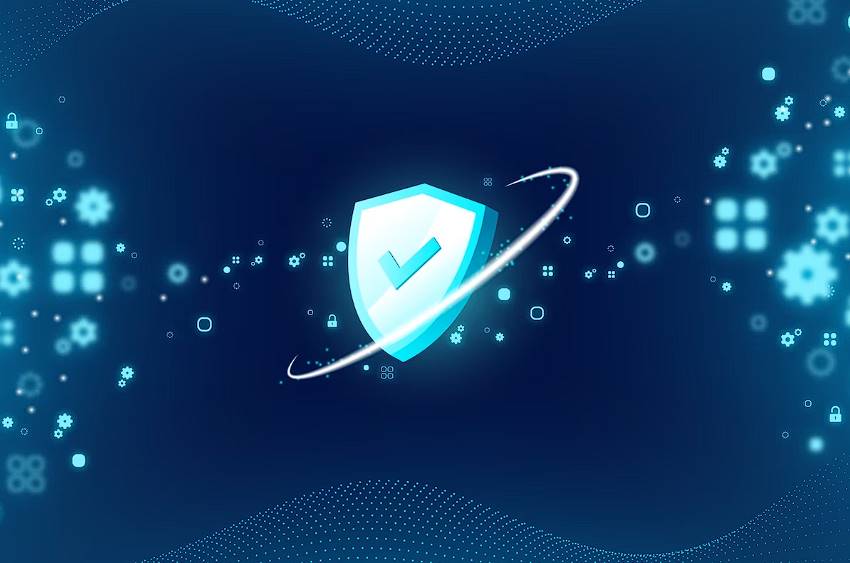The prevalence of cyberattacks is well-known to be growing. The consequences of a security breach may be devastating for any organisation, whether large or small.
It just takes one security breach to cause irreparable harm to your finances, reputation, and legal standing. This security hole, which can often be traced back to careless actions by employees, must be closed immediately.
While it's crucial to put money into top-notch security measures, teaching your staff how to stay safe online is critical. After all, your staff is a key factor in protecting the confidentiality of your company's information.
When it comes to cyber security, not all workers are created equal. While some readers may be familiar with the indicators of a phishing email, others may need to be more savvy.
A successful cybersecurity education programme begins with an in-depth understanding of your organisation's unique training requirements.
The difference between a thriving business in the digital age and one doomed to failure often comes from adherence to best practices and regulations, adequate training, and strict accountability enforcement.
The risk of expensive data breaches can be mitigated by educating personnel on cybersecurity best practices, which we'll discuss in this blog.
The Importance of Cybersecurity Education.
The National Institute of Standards and Technology encourages enterprises to plan for illegally accessing telework client devices to steal data or penetrate the company's network.
They may obtain entry by a variety of means, including:
- Experiencing a device theft or loss
- Strategy for Influencing Others
- Malware and ransomware used for phishing
- Privacy breaches that can be exploited on day one
- Attacks using macros and scripts
- Botnets as a threat
- failing to install necessary updates, including security patches and operating system upgrades.
Different Cyber Threats and How to Deal With Them
There is no denying the widespread nature of the cybersecurity threat that affects everyone who uses electronic devices. Anyone can do it, whether they're an individual, a company, or a group.
This is an attractive target for malicious software because of the ubiquity of electronic devices and the importance of constant connectivity. There have been many types of internet security threats since the internet's creation. Malicious assaults can be anything from an annoyance to a complete disaster, and they will be around for as long as the internet exists.
Common Threats to Cybersecurity
However, despite appearances to the contrary, many prevalent forms of security hazards are both recognisable and avoidable. Here are some examples of the threats and attacks that threaten people's safety nowadays.
Malware
We'll start with malware because it's the most widespread and typical security risk. It's been an issue since the World Wide Web began. Malware sneaks onto a computer and acts strangely. This includes blocking access to programs, erasing files, stealing data, and infecting other computers.
Password Theft
It's like, "I've been hacked!" That's what most people think when they try to log in and find that their password has been changed and their information has been deleted. The truth is that an unauthorised third party has gained access to your account, either by guessing or stealing your password. It's worse for a business, as confidential information could be lost.
Traffic Interception
Traffic interception, often known as "eavesdropping," occurs when a third party "listens" to data transmitted between a user and a host. The specific credentials or sensitive data taken depend on the volume of traffic but are always undesirable.
Phishing Attacks
Phishing is an old-school fraud that uses social engineering to fool people into giving over their personal information. Users frequently get messages or emails asking for personal information like passwords. Phishing emails can fool recipients using seemingly official email addresses and media. This forces people to make impulsive decisions that could compromise their security, such as clicking on malicious links.
DDOS
Distributed Denial of Service attacks knock down servers by flooding them with traffic. When a server is overloaded, the hosted website either goes down or becomes unusable.
Cross-Site Attack
A cross-site scripting attack. In this scenario, an outsider goes after a website with security flaws, most often lacking encryption. When a specific target is reached, malicious code is uploaded to the site.
The payload is sent to the user's computer or web browser when the user visits the website in question, resulting in malicious activity. The objective is to cause disruption to regular services or to steal sensitive user data.
The Most Effective Methods for Raising Employee Cybersecurity Awareness
Strengthening your first line of defence against external threats, i.e. teaching your personnel cybersecurity awareness, is essential for lowering the probability of a network incursion. Here are seven suggestions for training telecommuters in safe computing procedures.
Educate your staff on the importance of cyber safety.
First, communicate clearly what is happening in your organisation regarding cybersecurity and why it is important for employees to become familiar with this topic. Such a message must be easily digestible, applicable, and varied.
Understandable
Avoid using overly technical language that could confuse or mislead your staff. If feasible, try to utilise layman-friendly phrases instead of technical ones.
Relatable
When discussing external risks, focus more on individual computers and home networks than the core network. Employees will be more likely to take the warning seriously if it is discussed regarding potential harm to their mobile device or computer. Everyone wants to avoid being responsible for a data breach that impacts the entire firm, giving everyone a personal stake in the security plan.
Diversified
A summary email might not do the trick. Remember to consider the worker's inbox volume. Employees are more likely to pay attention to your message if you use a variety of channels to disseminate it rather than treating each announcement as the last.
Remember that Protocol Must Always Come First
Ensuring workers know they play a role in the company's commitment to data security should be the first priority in training. Not following protocol and protecting their devices could make them the weak link in a secure network, allowing viruses or other dangerous code to infiltrate. Get the right security programs installed on their computers and ensure they know how they work and what they need to do to be safe.
Although all installed software should receive automatic updates, workers should be aware of potential problems and know who to contact (such as a member of the IT department) if they arise.
Encourage Extreme Caution When Handling All Of Your Electronic Devices
Employees must understand that their equipment is a potential security breach, whether it's a company-issued computer or a personal smartphone. That's why they must practise good device hygiene even at home.
You may aid in the rise of excellent gadget ownership by doing the following:
- Explain the distinction between individual and professional use.
- Require all employees to use a work account that can be tracked, has limited access, and is filtered from the internet.
- Traditional forms of theft and loss should be avoided.
- Ensure all operating system and security patches are installed and used.
By automating push updates and keeping constant tabs on the device's condition and location, a device management and monitoring solution can help reduce vulnerability. But this should be a fallback, and the onus for implementing proper end-user security should be on the individual.
Instruct Workers on How to Identify Fraudulent Behaviour
Train your staff to be more vigilant by instructing them to look out for the following indicators of cybercrime:
- The unexpected arrival of brand-new software on their gadgets
- Weird prompts upon boot up, during use, or just before powering down
- The machine loses speed.
- Extra browser add-ons or windows
- Inability to Use a Computer Due to Loss of Control
Your staff should be urged to report any questionable behaviour immediately. A false alert may help an employee by revealing and fixing flaws in their equipment that are getting in the way of their work.
All Critical Information Must Have Regular Backups
All information created or handled by employees should be considered business property and protected. This necessitates safeguards against malicious actors and backups in the event of any catastrophe, even something as basic as hardware failure. If data backup is required, ensure your staff knows the procedures.
Restrict Device Access To Authorised Users Only.
Company Only employees given explicit permission to do so should use company-issued computers, mobile phones, tablets, or other electronic devices. In addition, it should be emphasised that using any gadgets requires permission. Educate your staff on the importance of not just not using any device without permission but also not allowing anybody else to use it without permission.
Safely Developing Website Content
Since hackers routinely scour the web for vulnerable code, anybody with access to constructing or maintaining websites must know best practices for doing so safely and closing any loopholes that malicious actors could use. Company websites should only be updated by approved personnel. This is especially crucial for pages that lead to confidential data.
Do Not Allow Unauthorised Programmes
A company's employees shouldn't install third-party programs on company computers or mobile devices. Still, owners may need to stress this policy frequently because workers may need to pay attention to this rule without malicious intentions. They should realise the gravity of the situation.
Confidentiality Must Be Reinforced
People become more careless about cybersecurity when they work from home. Reinforce the value of strong passwords and two-factor authentication, even if employees wear pyjamas to the office. They shouldn't assume that since things are casual, security can be, too.
The following employee training exercises can mitigate confidentiality threats in the realm of cybersecurity:
- Create new, different passwords regularly.
- Use examples from data breaches to illustrate the risks to employees of using generic passwords. Perhaps they are concerned that the pawn shop has acquired the passwords to their accounts.
- Discuss the reasoning behind virtual private networks (VPNs), multi-factor authentication (MFA), and other secure log-on procedures, as well as why these processes are vital despite the time they take.
- Show how companies have lost data because an employee lost a flash drive or a hacker accessed their personal Dropbox account.
Analyse Specific Incidents of Cybersecurity Violators
Employees' home computers may have less stringent security measures than those used in the office. Others may use public hotspots in places like cafes to connect to the internet.
It may be required to address the worries of users whose devices are too old to receive security updates by
- Motivating workers to use company-issued gadgets. If you're using your gadget, you should research the manufacturer and release year to discover if any security holes exist.
- Check the safety of your home network. Some older routers may use the insecure WEP protocol instead of the more secure WPA-2, while others may still use their factory-issued passwords.
- When developing a security policy, employees who frequently use public Wi-Fi hotspots or roaming data should be considered.
Conclusion
Cybersecurity education is crucial for organizations to protect their confidential information and prevent costly data breaches. The National Institute of Standards and Technology encourages enterprises to plan for illegal access to telework client devices to steal data or penetrate the company's network. Common threats include malware, password theft, traffic interception, phishing attacks, DDoS attacks, and cross-site attacks.
To raise employee cybersecurity awareness, it is essential to communicate clearly about the importance of cybersecurity and why it is important for employees to become familiar with this topic.
Use layman-friendly phrases instead of technical language and focus more on individual computers and home networks than the core network. This will make employees more likely to take the warning seriously and avoid being responsible for a data breach that impacts the entire firm.
Education should be tailored to the unique training requirements of each organization. Adherence to best practices, adequate training, and strict accountability enforcement can help mitigate the risk of expensive data breaches.
In summary, educating employees on cybersecurity best practices is essential for businesses to protect their information and maintain a strong online presence. By educating staff on the importance of cybersecurity, they can better understand the risks associated with their work and take steps to protect themselves from potential cyberattacks.
To ensure data security, it is essential to diversify communication channels and prioritize protocol. Employees should be aware of their role in the company's commitment to data security and have the right security programs installed on their computers.
Encouraging extreme caution when handling electronic devices, such as company-issued computers or personal smartphones, is crucial. Training staff on identifying fraudulent behavior, regular backups, restricting device access to authorized users only, and ensuring website content is developed by approved personnel is also important.
Confidentiality must be reinforced, especially when working from home. Employees should create new passwords regularly, use examples from data breaches, discuss the reasons behind VPNs, multi-factor authentication, and other secure log-on procedures. Companies should also analyze specific incidents of cybersecurity violators, such as employees using public hotspots or roaming data.
To address concerns about older devices, encourage workers to use company-issued gadgets and check the safety of their home network. Some older routers may use insecure WEP protocols instead of WPA-2, while others may still use factory-issued passwords.
When developing a security policy, consider employees who frequently use public Wi-Fi hotspots or roaming data. By following these guidelines, companies can help their employees maintain a secure and productive work environment.
Content Summary
- Cyberattacks are on the rise, posing a threat to organisations of all sizes.
- A single security breach can wreak havoc on finances, reputation, and legal standing.
- Employee actions often contribute to security breaches and must be addressed promptly.
- Teaching staff online safety is vital for safeguarding company information.
- Not all employees have the same level of cybersecurity awareness.
- A successful cybersecurity education programme aligns with an organisation's unique needs.
- Adherence to best practices, training, and accountability are critical in the digital age.
- Educating personnel on cybersecurity can mitigate costly data breaches.
- The National Institute of Standards and Technology highlights the risk of data theft.
- Entry points for cybercriminals include device theft, malware, and privacy breaches.
- Malicious software, or malware, is a common and disruptive cybersecurity threat.
- Password theft can lead to unauthorised access and data loss.
- Traffic interception, or eavesdropping, compromises data security.
- Phishing attacks manipulate individuals into revealing personal information.
- Distributed Denial of Service (DDOS) attacks overwhelm servers.
- Cross-Site Scripting attacks target vulnerable websites.
- Raising employee cybersecurity awareness is crucial for network security.
- Clear communication is key when explaining cybersecurity importance.
- Use understandable language to avoid confusion.
- Relate cybersecurity risks to personal devices to engage employees.
- Diversify communication channels to reach employees effectively.
- Protocol adherence is fundamental to network security.
- Ensure software updates are installed promptly.
- Encourage cautious handling of electronic devices.
- Explain the distinction between personal and professional device use.
- Require employees to use work accounts with limited access.
- Emphasise the importance of avoiding theft and loss.
- Promote regular installation of security patches.
- Device management and monitoring solutions enhance security.
- Train employees to identify signs of cybercrime.
- Recognise unexpected software or slow performance.
- Educate employees to report suspicious behaviour promptly.
- Back up critical information regularly.
- Restrict device access to authorised users only.
- Highlight the importance of not installing unauthorised programmes.
- Reinforce the value of strong passwords and two-factor authentication.
- Encourage regular password changes.
- Illustrate risks of generic passwords using data breach examples.
- Explain the significance of VPNs and multi-factor authentication.
- Discuss data loss incidents due to employee actions.
- Analyse cybersecurity incidents and lessons learned.
- Address concerns regarding less secure home computers.
- Motivate employees to use company-issued devices.
- Evaluate the security of home networks.
- Consider security policies for public Wi-Fi and roaming data users.
- Protecting data is essential for businesses and individuals.
- Cybersecurity education is an ongoing process.
- Stay vigilant against evolving cyber threats.
- Empower employees to be cybersecurity champions.
- A well-informed workforce is a strong defence against cyberattacks.
Frequently Asked Questions
Employees should immediately report any suspected security incidents to their IT department or the designated security contact within the organisation.
Employees should use secure VPNs, encrypt sensitive data, and follow the same cybersecurity best practices they would in the office.
Social engineering involves manipulating individuals to divulge confidential information. Employees should be cautious of unsolicited requests for information and verify the requester's identity.
Employees should install security software, enable device encryption, and follow company policies regarding personal device usage for work.
Many organisations provide regular cybersecurity training, resources, and updates to keep employees informed and prepared for evolving threats.


